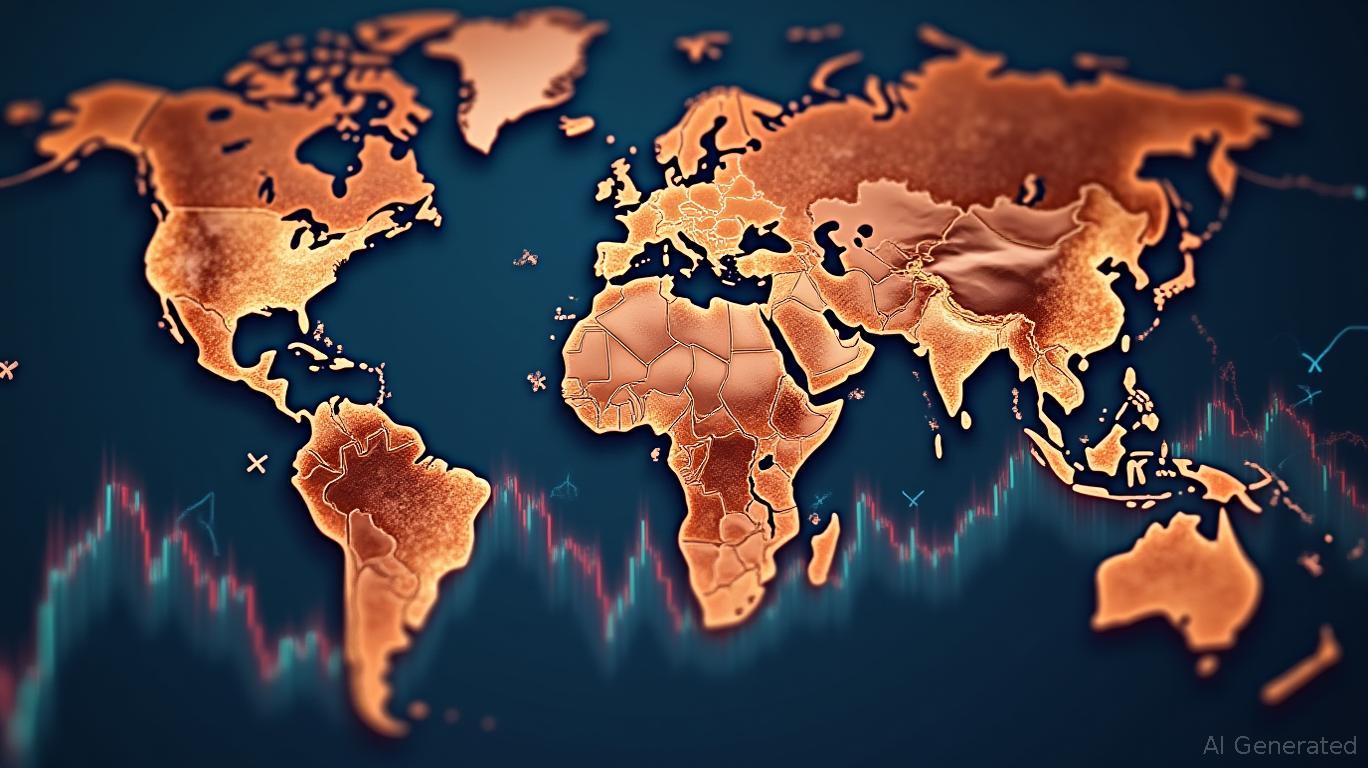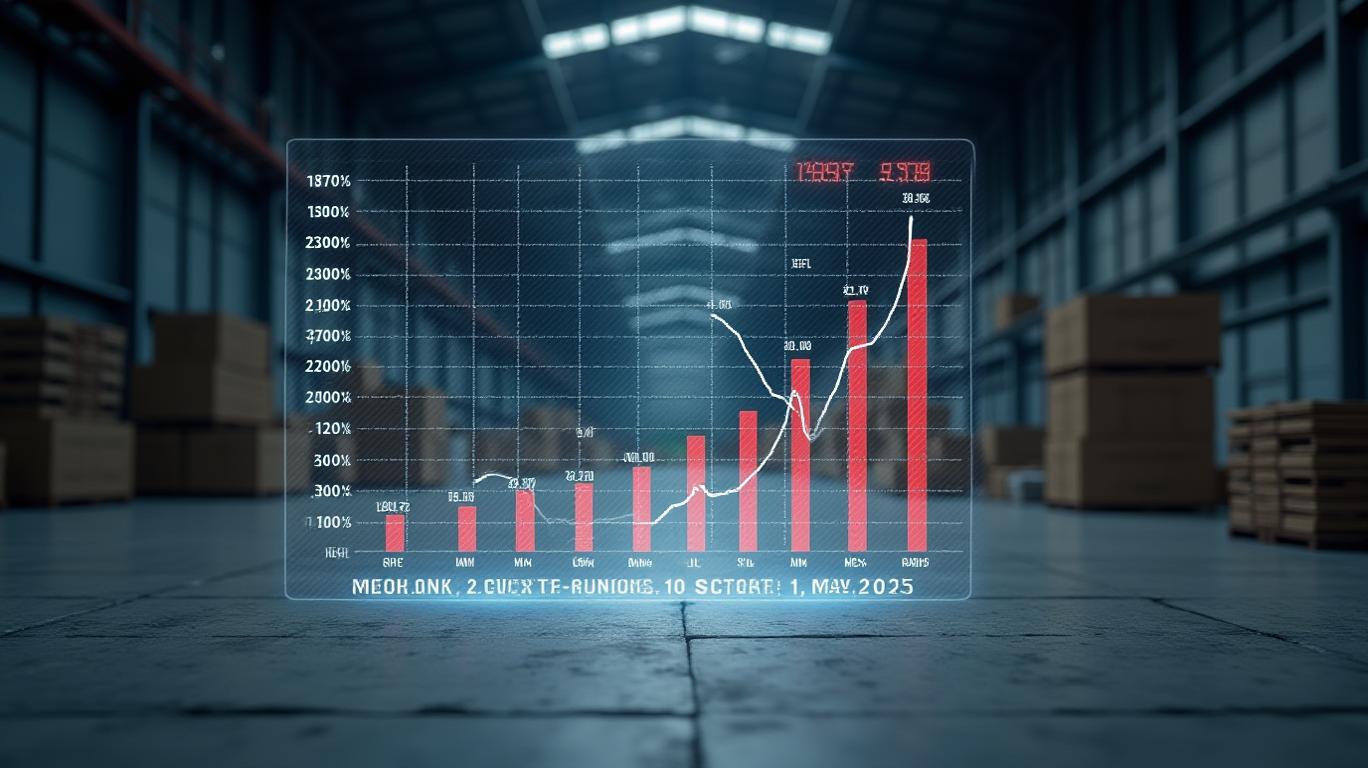Copper's Resilience Amid Trade Turmoil: Navigating Uncertainty in 2025 and Beyond
The price of copper—a barometer of global economic health—has become a battleground for competing forces in 2025. After a sharp slump in April due to escalating U.S. trade policies, the metal edged higher on May 1, rising to $4.58 per pound, reflecting cautious optimism about diplomatic progress in trade negotiations. This volatility underscores the delicate interplay between geopolitical tensions, supply chain disruptions, and the growing demand for copper in green technologies.

The Trade Policy Crossroads
The U.S. administration’s sweeping reciprocal tariff regime, declared on April 2 as a national emergency, has cast a shadow over copper markets. While baseline tariffs of 10% were applied to all imports, delayed country-specific rates—including a staggering 125% tariff on Chinese goods—created uncertainty. This policy, aimed at addressing a $1.2 trillion trade deficit, has unintended consequences:
- Supply chain strains: China’s retaliatory tariffs on U.S. agricultural exports and energy resources have disrupted global trade flows, while U.S. tariffs on copper imports risk widening the gap between domestic and global prices.
- Production headwinds: Glencore’s 30% drop in Q1 copper output and Chilean supply disruptions (e.g., the Escondida mine outage) have tightened physical markets, boosting futures prices.
Copper’s Duality: A Victim and Beneficiary of Policy Choices
Copper is both a casualty of trade wars and a beneficiary of long-term structural trends:
- Near-term risks:
- The U.S.-China tariff standoff has reduced liquidity in physical markets. As of May 1, the CME-LME copper price spread stood at 10%, signaling U.S. buyers are insulated from global price declines but face higher costs.
Recession fears, amplified by tariff-driven inflation, could dampen demand for copper-heavy sectors like housing and automobiles.
Long-term tailwinds:
- Green transition demand: The shift to renewable energy and electric vehicles (EVs) requires vast amounts of copper. A single EV uses 83 pounds of copper, compared to 50 pounds for a conventional car.
- Supply constraints: Despite rising prices, mining companies face $100 billion in underinvestment since 2011, while environmental regulations and community opposition slow new projects.
Navigating the Contango Curve
The futures market’s contango structure—where distant contracts trade at premiums—hints at expectations of supply shortages or demand growth. For instance:
- The June 2025 contract (HGM25) closed at $4.59, while the April 2026 contract (HGJ26) rose to $4.86, a 2.2% premium to the May 2025 price.
This suggests traders are pricing in risks such as:
- A potential U.S.-China trade deal that removes tariffs and stabilizes supply chains.
- Chinese stimulus measures to boost infrastructure spending, which could lift copper demand.
Key Takeaways for Investors
- Short-term volatility is inevitable: Trade negotiations, geopolitical flare-ups, and supply disruptions will keep prices choppy. The $4.33 Q2 2025 forecast assumes a baseline of $4.50–$5.00/lb, with upside risks if trade tensions ease.
- Long-term fundamentals favor copper: The 4.2% CAGR for recycled copper supply and 2.1% for mined supply mean scarcity could dominate over the next decade.
- Monitor macroeconomic signals: A weaker U.S. dollar (as seen on May 1, when the DXY fell to 104.02) and rising gold prices (+0.69% on May 1) often correlate with commodity strength.
Conclusion: A Metal at the Crossroads of Policy and Progress
Copper’s recent rebound to $4.58/lb on May 1 highlights its dual identity: a victim of trade wars and a beneficiary of the green revolution. While the U.S. tariff regime has injected near-term uncertainty, the metal’s role in decarbonization and its constrained supply dynamics support a bullish medium-term outlook.
Investors should focus on:
- Trade deal catalysts: A reduction in U.S.-China tariffs could unlock a price surge toward $5.20/lb, the March 2025 high.
- Supply bottlenecks: Glencore’s production cuts and Chile’s regulatory hurdles may limit the downside.
- Demand drivers: The $1.2 trillion U.S. Bipartisan Infrastructure Law and global EV adoption (projected to hit 45 million units by 2030) will sustain copper’s strategic importance.
In this era of geopolitical and economic turbulence, copper remains a litmus test for global stability—and a compelling bet for those willing to navigate the storm.


_442a2dcc1749832873286.jpeg)
_e68fac6d1749831664430.jpeg)





